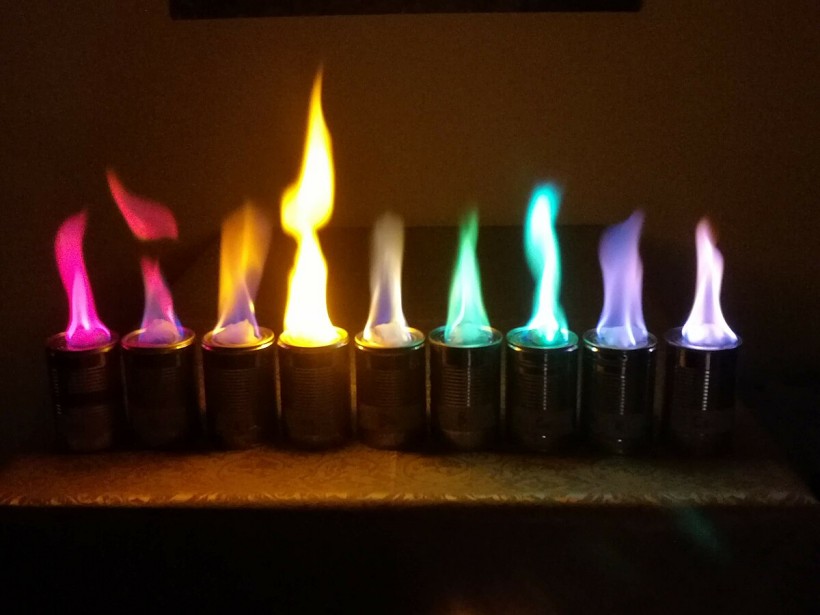The colors of flames, ranging from bright yellows to deep blues, have fascinated people for ages. Many wonder which color indicates the hottest flame, a question that delves into the science of heat and combustion.
Each color corresponds to various substances undergoing combustion, with hotter fires emitting different hues than cooler ones. This understanding unveils the correlation between temperature, fuel, and flame color, providing insight into practical applications and natural occurrences.

(Photo : Wikimedia Commons/Hegelrast)
Hottest Flame: Which Fire Color Is the Warmest?
Fires can exhibit various colors, ranging from gentle blue and bright yellow to deep orange and rich red, each color offering insights into the combustion process.
Blue flames, often seen in well-adjusted burners, signify a hotter, oxygen-rich burn. Conversely, orange and yellow flames, common in wood fires, suggest moderate temperatures with less complete combustion.
Red flames, indicating cooler temperatures, are typically observed in conditions of limited oxygen or when burning certain materials. These flame colors serve as indicators of temperature and combustion efficiency, reflecting the availability of fuel and oxygen.
Surprisingly, the hottest flames are not the vibrant oranges and reds of a campfire but rather the violet, ultra-violet, indigo, and blue hues. These colors denote a more intense and efficient combustion process, reaching higher temperatures than yellow or red flames.
In scientific experiments and practical applications like laboratory Bunsen burners or kitchen oven hobs, the blue-violet flame signifies maximum heat output. Achieved under optimal conditions of fuel and oxygen, blue flames demonstrate complete combustion, releasing maximum energy and minimizing waste.
With temperatures exceeding 2,552 to 2,912 degrees Fahrenheit (1,400 to 1,600 degrees Celsius), blue fires exemplify superior heat production, while violet fires can burn even hotter, surpassing 3,000 degrees Fahrenheit (1,650 degrees Celsius). This intense heat, concentrated in the hottest part of the flame, indicates efficient oxygen-fuel mixing, crucial for controlled environments and industrial applications requiring precision heating.
READ ALSO: When Did Humans Discover Fire? How Did the Blazing Flames Shape Our History?
Why Flames Have Different Colors?
Combustion, an exothermic reaction, releases significant heat energy as molecules undergo chemical changes. Alongside heat, these reactions emit energy in the form of photons, producing light. In atoms, electrons revolve around the nucleus in orbitals, each with different energy levels.
As electrons transition between orbitals, they absorb or release energy, striving for the lowest energy state to attain stability. In chemical reactions like combustion, atoms lose energy, leading to electron de-excitation, a fundamental process driving energy change and stability in molecules.
The de-excitation of electrons leads to the emission of energy, predominantly in the form of light photons. These photons, the elemental units of light, carry varying energy levels depending on the electron's energy change, resulting in different wavelengths and thus different colored lights.
In combustion, the color of the flame is determined by the energy state changes of electrons in the molecules involved. Carbon-based fuels, prevalent in daily life, produce distinct flame colors based on their oxidation levels. For instance, complete oxidation of carbon to carbon dioxide results in a blue flame, observed in well-oxygenated environments.
In contrast, insufficient oxygen leads to the formation of soot, emitting yellow light due to partially oxidized carbon particles. Complex carbon molecules like wax and wood exhibit an orange-yellow flame due to the high carbon-to-oxygen ratio, while simpler fuels like methane and LPG burn with a characteristic blue flame owing to sufficient atmospheric oxygen for complete oxidation.
RELATED ARTICLE: Blue Fire Tornado Explained: What Exactly Is 'Blue Whirl Flame' Made Of?
Check out more news and information on Flame in Science Times.



![Earth's Quasi-Moon Kamo‘oalewa Could Originate From Lunar Surface Not Asteroid Belt [Study]](https://1721181113.rsc.cdn77.org/data/thumbs/full/53275/89/56/50/40/earths-quasi-moon-kamo-oalewa-could-originate-from-lunar-surface-not-asteroid-belt-study.png)










